HarmonyOS PCs launch, will Huawei and Microsoft eventually clash?
![]() 05/21 2025
05/21 2025
![]() 506
506
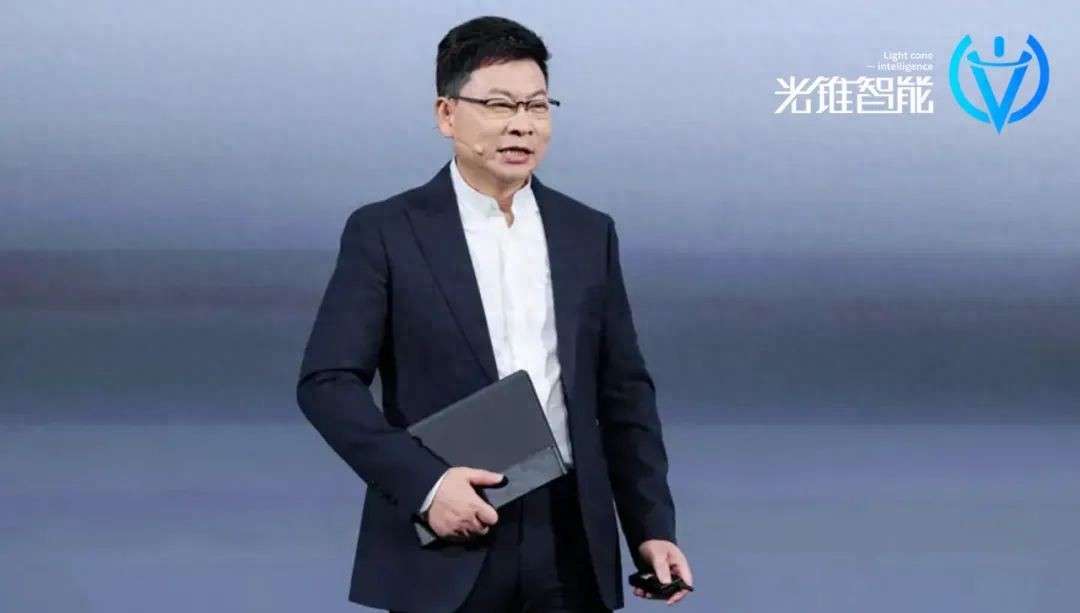
In 1981, IBM inadvertently elevated its rival to a "throne".
Initially, IBM merely intended to bring Microsoft and Intel together to design PCs to compete with Apple. To create more competitors for Apple, Don Estridge, then a mid-level manager at IBM, publicly released the source code for BIOS (Basic Input/Output System). Subsequently, Microsoft's operating system and Intel's processors became standard for all PC manufacturers.
After that, IBM's PC business was defeated by numerous competitors. Relying on the licensing fees of its operating system, Microsoft became the biggest winner of the PC era. Summarizing Microsoft's rise, Harvard Business School borrowed from the theory of value networks to write -
"Microsoft transformed the hardware value network established by IBM into a new software-centric ecosystem.""
In the era of AI, China's PC industry is witnessing another "war" of value networks.
On May 19, Huawei released two PCs equipped with HarmonyOS. Among them, the Huawei MateBook Pro is a conventional lightweight laptop aimed at business needs. The other, the HUAWEI MateBook Fold Masterpiece, looks like a single screen.
"It's a computer experience facing the future.""
As summarized by Richard Yu, Executive Director of Huawei and Chairman of the Terminal BG, the launch of these two products means that Huawei is redefining productivity in the PC era with a domestic operating system.
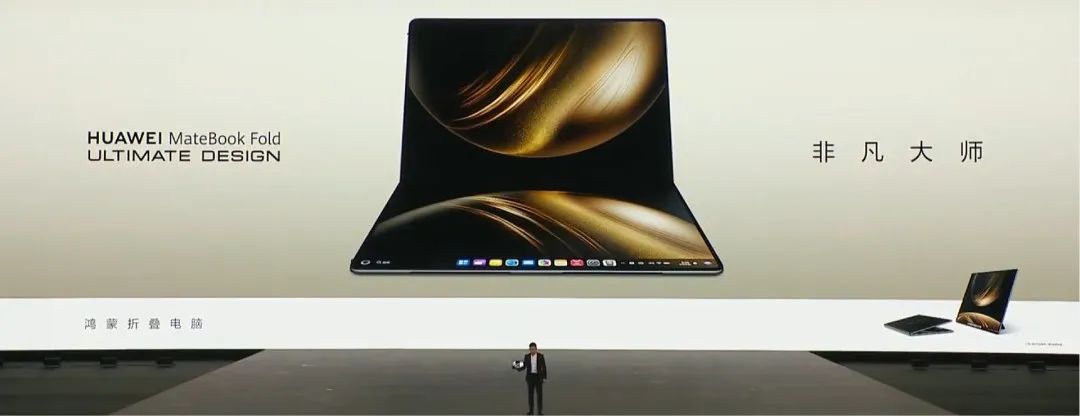
From the product's appearance, the HUAWEI MateBook Fold Masterpiece differs significantly from conventional PCs, with an overall product form that can be considered an "enlarged" foldable screen phone. With a screen size of up to 18 inches, the product can freely switch between an unfolded state for presentations and a folded state for office work.
Such an imaginative product form has led some netizens to say that Huawei has "cleared" all foldable screen products.

In terms of software, both HarmonyOS PCs possess a highly completed application ecosystem. Basically, software for regular online entertainment and light productivity tasks such as WPS, Bilibili, Jianying, and Wondershare Filmora are all available. In terms of AI capabilities, HarmonyOS PCs natively support the XiaoYi AI assistant, allowing users to generate meeting minutes, document copywriting, and other office scenario content with one click.
"HarmonyOS realizes the deep integration of AI capabilities with underlying hardware, operating systems, and third-party ecosystems," Yu Chengdong introduced.
For domestic users, XiaoYi, an AI that understands Chinese people better, is much more user-friendly than the "Copilot" button on Windows PCs.
In terms of pricing, the two HarmonyOS PCs released by Huawei this time basically have no "system premium". The starting price of the MateBook Pro is 7999 yuan, which is basically comparable to Apple's MacBook Air series. The starting price of the MateBook Fold Masterpiece is 23999 yuan, which is basically consistent with the pricing of the tri-fold phone Mate XT, offering a larger "screen" for the same price.


The launch of HarmonyOS PCs means that Huawei has completed the last link of its full-scenario terminal strategy. For China's electronics industry, it means that China is breaking the long-term monopoly of PC operating systems by Apple and Microsoft.
"HarmonyOS computers provide the world with another choice," said Yu Chengdong, who was still very excited on the scene despite being accustomed to big occasions.
What does a HarmonyOS PC starting at 7999 yuan look like?
From the two newly released products, it can be seen that while actively integrating other smart terminal technologies, Huawei has demonstrated quite radical insights into PC products.
First, let's look at the "less radical" MateBook Pro. For this product, Huawei's basic definition is a lightweight laptop for business use. Extreme thinness and lightness are the most important evaluation metrics for such products.
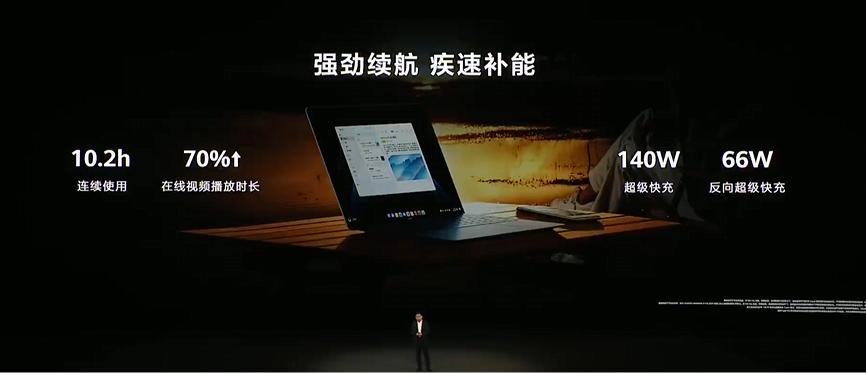
Compared to the benchmark for lightweight laptops, the MateBook Pro outperforms the Apple MacBook Air with a weight of 970 grams and a thickness of 13.5 millimeters. Notably, the MateBook Pro offers 66W reverse super-fast charging. This means that Huawei has additionally considered the need for business people to charge their phones. Taking a PC with you when you go out basically eliminates the need to carry a power bank.
The highlight of product understanding lies in the other product - the "foldable screen PC". In terms of product concept, the HUAWEI MateBook Fold Masterpiece can be understood as a large foldable screen phone.
When closed, it is a normal laptop computer with a total weight of 1.16 kg that can be carried around. When opened, it automatically splits the screen display. The upper screen corresponds to the screen of a conventional laptop, while the lower screen can display content independently or simply turn into the C-surface of a conventional laptop. When fully unfolded, it becomes a complete 18-inch display screen.
In summary, it feels a bit heavy when closed and very lightweight when unfolded. The overall feel is very similar to Huawei's tri-fold phone.
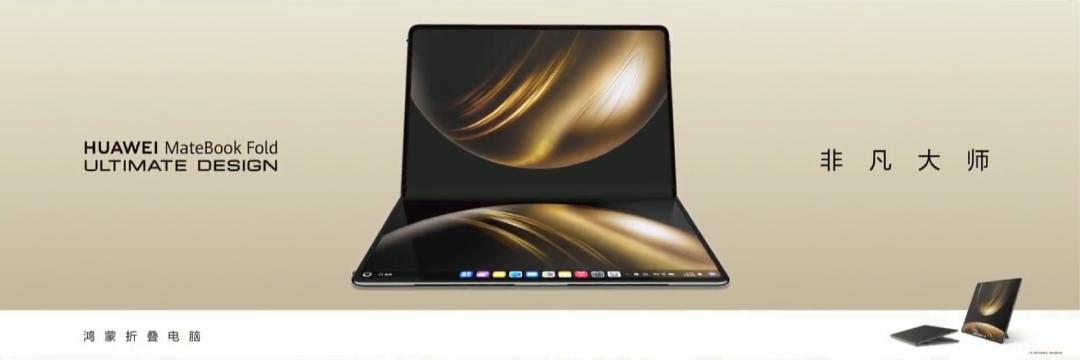
The part that integrates with other smart terminal products is Huawei's integration of interaction logic. In addition to touchscreen operation, the HUAWEI MateBook Fold Masterpiece supports various gesture controls. For example, placing both hands on the screen brings up the virtual keyboard, tapping for screenshots, grasping to adjust windows, and more.
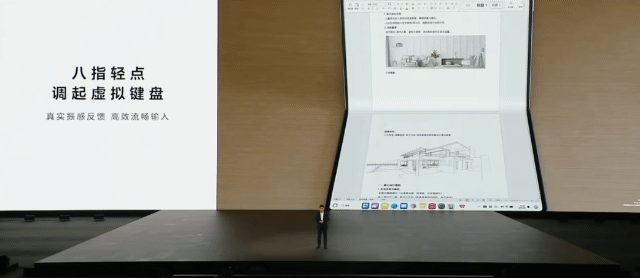
In addition to convenient operation, the greater value that HarmonyOS brings to PCs lies in terminal collaboration ecosystems and AI capabilities.
Before the emergence of HarmonyOS PCs, Huawei's terminals had not been able to establish an interconnected ecosystem for work scenarios. Although Huawei has done a lot of collaborative adaptation between mobile phones and PCs, PCs still cannot fully control mobile phones.
After HarmonyOS connects to PCs, Huawei's terminals can now achieve seamless information flow. When mobile phones, PCs, and tablets are placed together, the cursor moves wherever your eyes look. It's almost like controlling all terminal devices with a single screen.
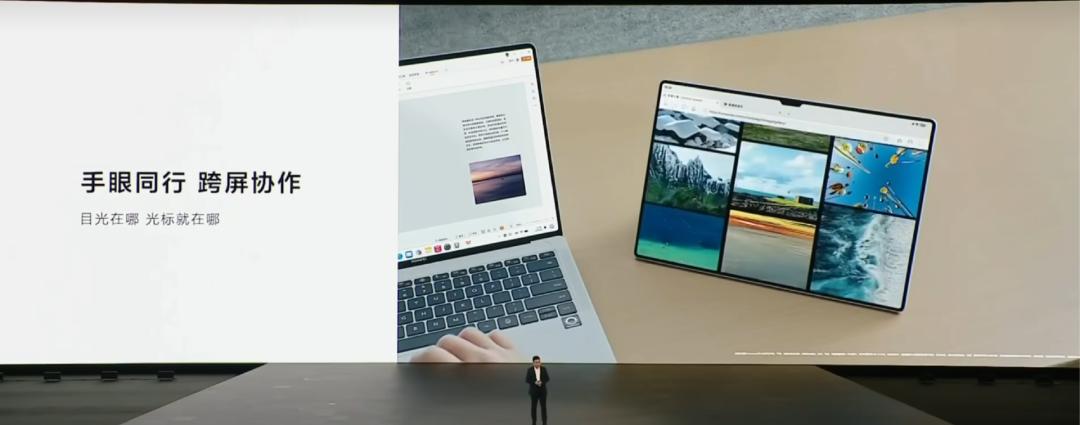
If we say that device collaboration capabilities take advantage of Microsoft's basic lack of mobile phone and tablet devices, then in terms of AI support, HarmonyOS PCs set an example for global PC manufacturers.
Since Apple computers do not massively push AI to the client side, we compare them to Microsoft system PCs. Currently, the overall "AI content" of AIPC is severely insufficient.
Generally speaking, the AI functions of Microsoft system PCs are implemented in two ways. The first is Microsoft's physical "copilot" button. For domestic users, pressing this button is no different from pressing the "Win" button, making this button a waste of keyboard space. The second is the built-in AI microphone noise reduction and AI camera functions of PC devices.
These functions, which have relatively simple usage scenarios and low usage frequency, keep the NPU of user computers in a "idle" state for most of the year. However, for AI functions that users truly demand frequently, such as AI document generation, AI drawing, and AI knowledge retrieval, they can only be achieved using third-party AI tools.
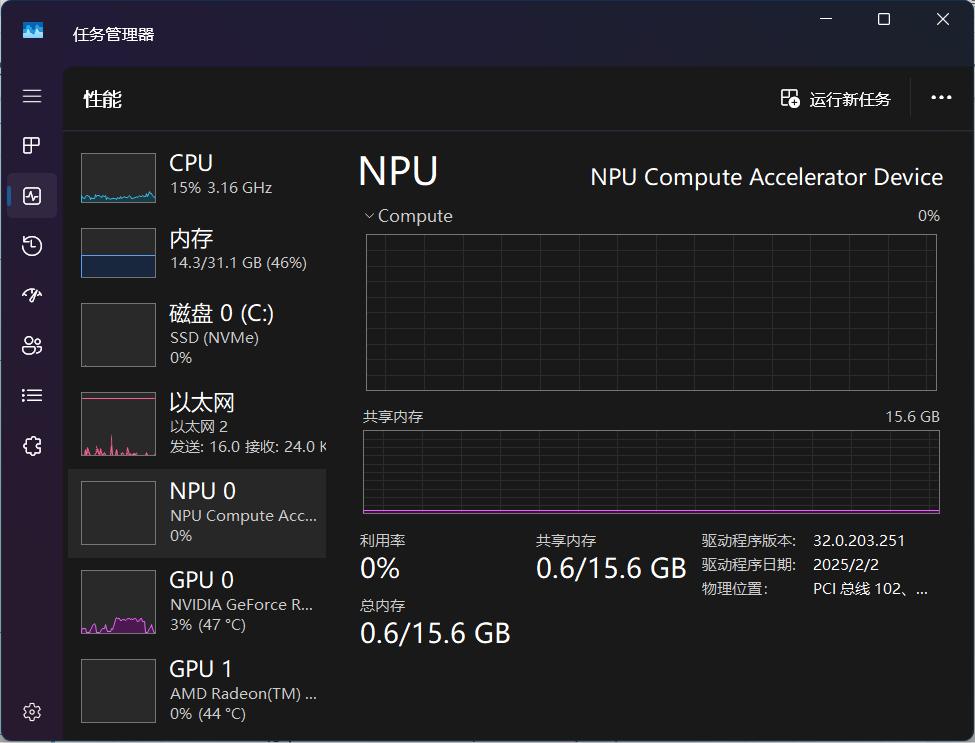
For HarmonyOS PCs, the above issues do not exist at all. Due to the native built-in AI module in HarmonyOS, combined with third-party models such as DeepSeek, HarmonyOS PCs can directly provide native AI capabilities such as meeting minutes, document generation, knowledge search, and device operation. Even XiaoYi's meeting hosting function can help you "slack off". When you are mentioned in an online meeting, XiaoYi will remind you on your phone and provide you with a summary of the current meeting.
However, HarmonyOS PCs also have noticeable shortcomings.
Similar to the situation with HarmonyOS on mobile phones, the number of applications for HarmonyOS on PCs is very limited, and currently, only some productivity and light entertainment applications have been adapted.
Judging from the known software adaptation situation, HarmonyOS PCs do not have WeChat for the time being. In addition, if users have light gaming needs, HarmonyOS PCs do not currently support any mainstream gaming platforms.

Yu Chengdong is quite confident about the upcoming adaptation progress of HarmonyOS PCs, "At the HarmonyOS PC technology communication meeting on May 8th, there were only 300 applications. After more than ten days, more than 1000 applications have been adapted."
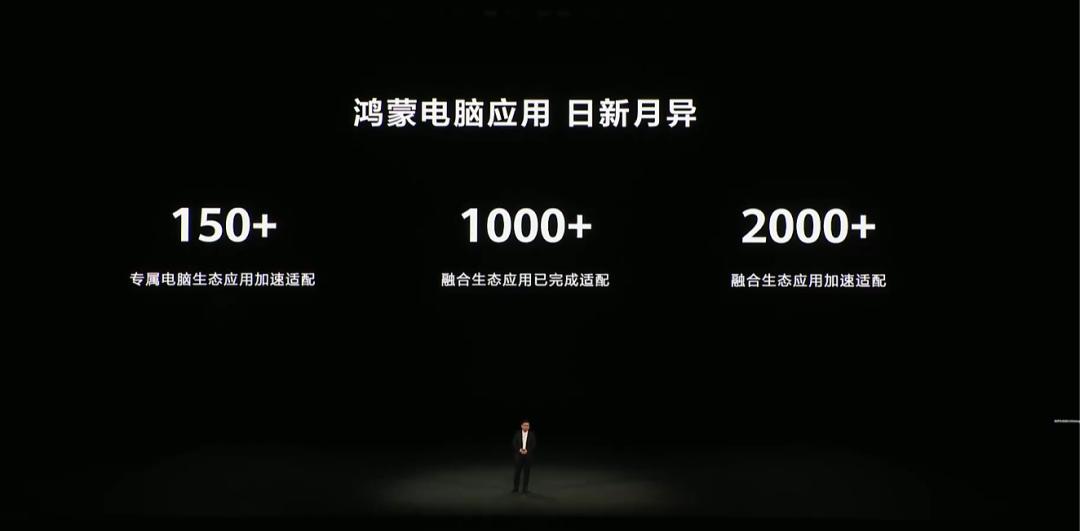
In terms of peripherals, HarmonyOS PCs are also accelerating the completion of adaptation. According to statistics, more than 1100 peripherals have been adapted so far. In addition to conventional keyboards, mice, and monitors, there are also more than 300 non-standard peripherals (printers, tablets, scanners, etc.). In the short term, there should be no major issues with using HarmonyOS PCs for B-end purposes.
Overall, although the two HarmonyOS PCs released this time cannot fully meet daily use needs, they can still be considered highly completed PC products.
In the short term, the current task of HarmonyOS PCs is to accelerate software adaptation. Currently, many third-party manufacturers are actively launching virtual machine applications to help Windows users adapt to HarmonyOS. With the support of more and more consumers, it is expected that HarmonyOS will be able to "adapt" to the PC environment at a fairly rapid pace.
By then, China's PC operating system will hopefully overturn the decades-long monopoly of Windows and macOS.
In the era of AI terminals, the system competition is about kernel architecture
The most critical factor in Microsoft's victory over IBM was actually the era.
Forty years ago, the background of the PC industry was that consumers were eager to own a computer. At that time, PCs were not only very expensive, but the software and hardware ecosystem was extremely closed. IBM's release of the BIOS source code essentially "open-sourced" the manufacturing method of PCs to the entire market. With continuously lowering hardware prices and an open software ecosystem, the PC era ushered in a major boom.
In the era of smart terminals, PCs need a more suitable operating system to implement AI.
From the perspective of the system kernel, Microsoft adopts a monolithic kernel architecture. The kernel can be understood as the manager of computer resources, managing a series of hardware and software operations and interactions such as the CPU, memory, and bus. The meaning of a monolithic kernel is that all computer resources are integrated into a single "large kernel" for unified management.
HarmonyOS adopts a microkernel architecture. This architecture advocates that the kernel should only control the most critical resources of the computer, with all other functions handled modularly.
This design gives the operating system extremely high scalability. Today, HarmonyOS's AI capabilities come from the AI module added by Huawei during the HarmonyOS 4.0 era. If a monolithic kernel were to also achieve native AI support, the workload would be almost equivalent to redesigning the entire operating system architecture.

From an experience perspective, an operating system that natively supports AI can achieve a better understanding of users.
Taking the AI conversation scenario as an example, on a HarmonyOS PC, XiaoYi will remember what the user has said. On other PC devices, if users want AI to remember the conversation content, they may only have the option of deploying it on the client side or purchasing cloud-based large model services. Considering the distributed nature of HarmonyOS, this means that with the cooperation of the HarmonyOS ecosystem, intelligence can be ubiquitous as long as the hardware can perceive the user.
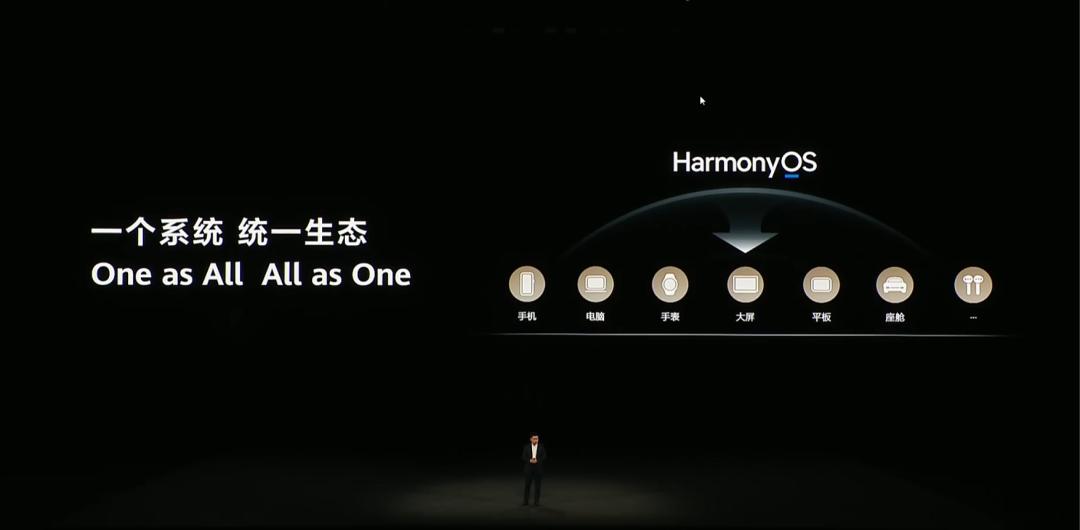
"System integration between devices has been a difficult problem plaguing the industry for many years. Microsoft, Google, and Apple have tried for years without success. The HarmonyOS operating system has achieved a unified system and unified ecosystem for multiple devices for the first time.""
As summarized by Yu Chengdong, by providing AI capabilities on all smart terminals, HarmonyOS may have the opportunity to redefine the value network of AI terminals.
On the one hand, compared with other mature terminal operating systems, HarmonyOS can be said to have "everything". Whether it's AI, compilation toolchains, system kernels, or other configurations, HarmonyOS has laid a solid foundation.
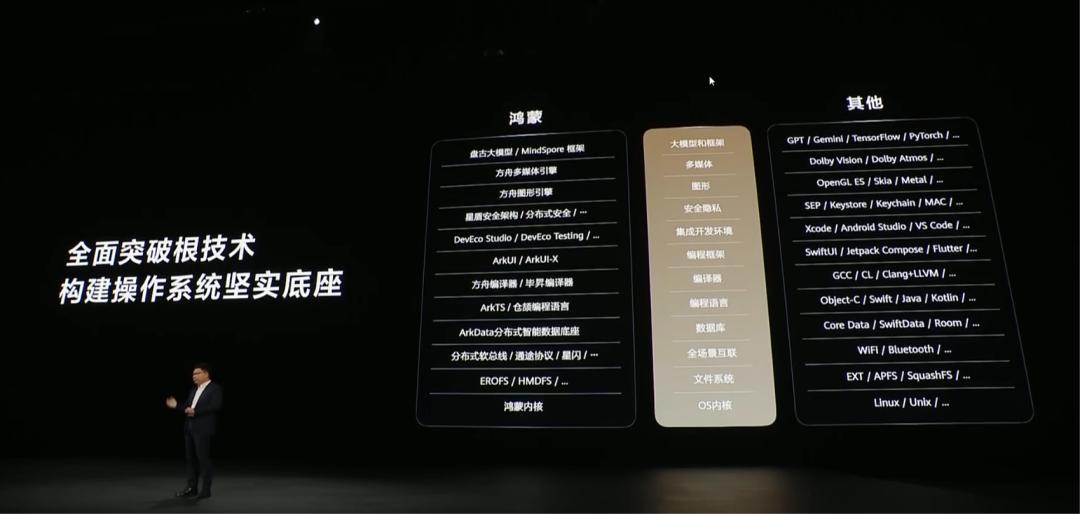
On the other hand, from the perspective of the software ecosystem, Huawei's intelligent terminals have already gathered countless users and software developers.
Taking PCs as an example, according to Canalys data, Huawei ranks third in PC shipments in China. Considering the in-depth cooperation between Softpower and Huawei, Huawei may actually be the second-largest player in terms of PC shipments in China.
Regarding the next strategy, Yu Chengdong announced the Qingyun Xinghe Plan at the event. Huawei will introduce a large number of commercial HarmonyOS PCs to the market, essentially issuing a direct challenge to Lenovo.
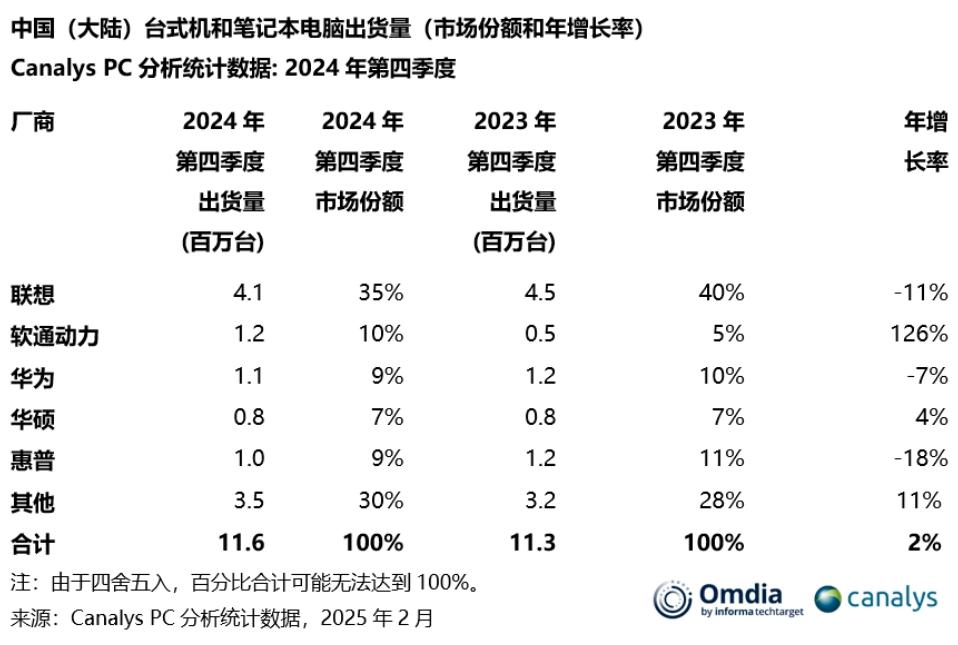
In the mobile phone market, Huawei's strength is formidable. After Huawei's return to the mobile phone market in 2024, it outperformed other domestic mobile phone manufacturers within just one year. According to Techinsights data, in the first quarter of 2025, Huawei topped the list with a 20% market share.
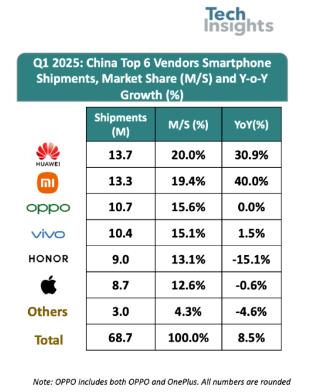
Whether it is current sales or future strategies, HarmonyOS has sufficient momentum to support its continuous growth.
"Every time I think about the development history of the HarmonyOS operating system, I can't help but shed bitter tears."
Speaking about the growth experience of HarmonyOS, Xu Zhijun, Huawei's rotating chairman, expressed deep emotion. "It is extremely difficult to build a terminal operating system. Even today, without the continuous support of consumers, the government, and partner companies, it is hard to say that HarmonyOS will definitely succeed."
The launch of HarmonyOS on PCs means a lot, both for Huawei and for China's electronics industry.
Seven years have passed, and China's electronics industry has undergone a complete transformation. Chips, operating systems, AI... In 2025, China has seen the emergence of numerous new products and players. Smart cars, autonomous driving, and large AI models are also becoming China's increasingly prominent technological strengths.
At the end of the conference, Yu Chengdong expressed confidence in both HarmonyOS and China's electronics industry.
"HarmonyOS computers are just getting started and need to continue growing. We firmly believe that with your strong support, HarmonyOS will become a force that changes the world. Every line of code you write is rewriting the future of China's computer industry."





